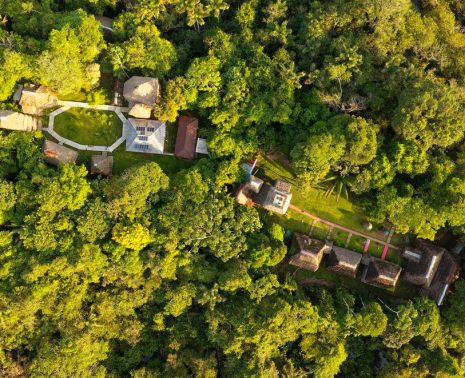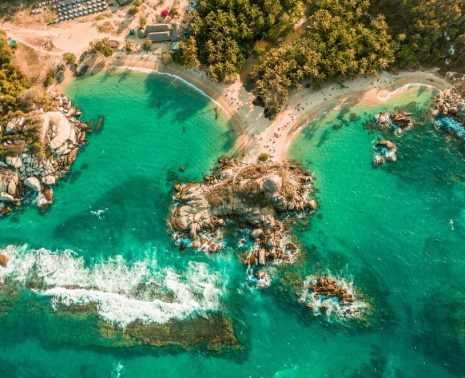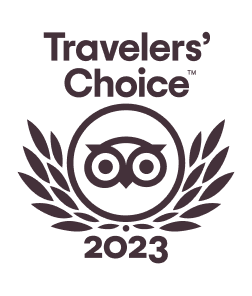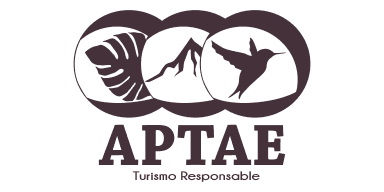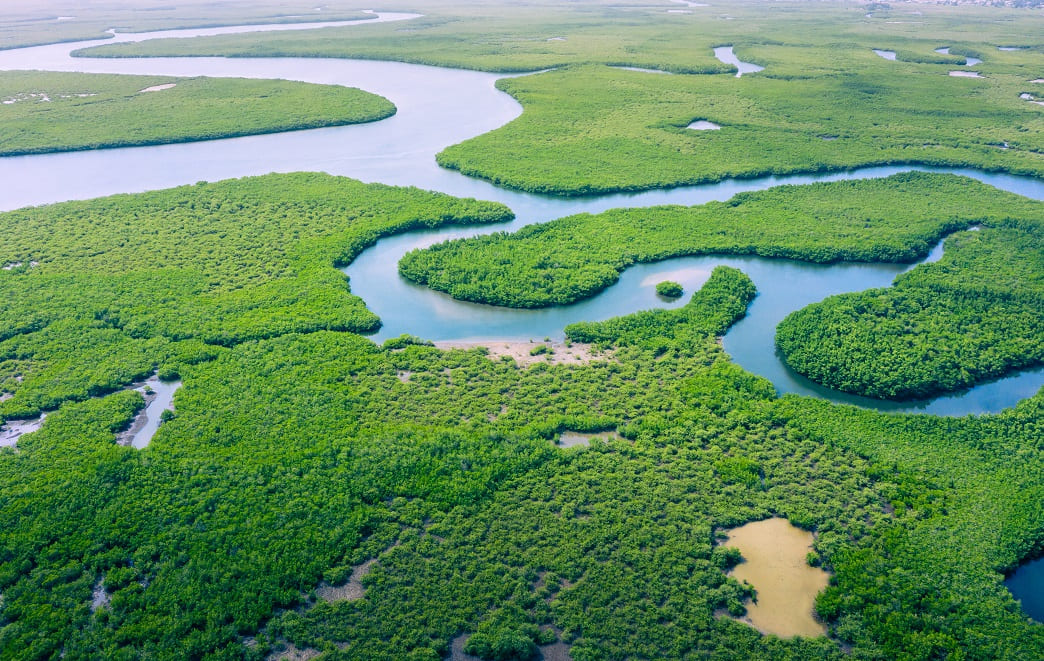
As conscious travelers become more aware of the impact of travel on the environment and local communities, they are seeking out ways to travel in a more responsible and sustainable way. At Kuoda, we believe sustainable travel and luxury are not mutually exclusive. Without cutting corners on your experience, we’ll ensure you have the most sustainable luxury trip to South America possible.
By making a conscious effort to travel sustainably, you can help reduce your carbon footprint and minimize the impact of your travel on the environment, and local communities. This can help mitigate the effects of climate change and preserve the natural beauty and culture of South America. Planning a sustainable luxury trip can give you a unique and authentic travel experience, allowing you to engage with local communities and explore natural environments and gain a deeper understanding and appreciation of the region’s culture and biodiversity. Contact us today to help you get started planning your sustainable luxury trip to South America.
Calculate your emissions
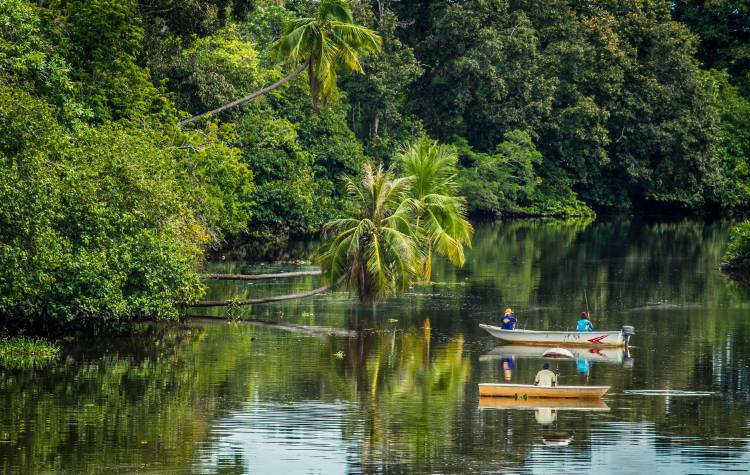
Calculating your emissions helps make an impact and contribute to a sustainable journey and future.
Calculating your carbon emissions can provide you with valuable information about your individual impact on the environment when you travel. By understanding your carbon footprint, you can identify areas where you can make changes in your travel plans to reduce your impact and contribute to a more sustainable future. The first step to planning a sustainable luxury trip is to calculate your emissions. You can use an online carbon calculator to estimate your carbon footprint from your flights, ground transportation, and accommodations. This will give you an idea of how much carbon you’re responsible for and allow you to take steps to reduce or offset it.
There are several free carbon footprint calculators available online that you can use to calculate your travel emissions. Here are a few options:
- Carbon Footprint: This website offers a free carbon footprint calculator that allows you to calculate your emissions from various sources, including travel. The calculator takes into account factors such as the mode of transportation, distance traveled, and fuel type. You can access the calculator here: https://www.carbonfootprint.com/calculator.aspx
- EcoPassenger: EcoPassenger is a free online tool that allows you to compare the carbon footprint and energy consumption of different modes of transportation. The tool covers several countries in South America and allows you to compare emissions for travel by train, car, bus, and airplane. You can access the tool here: https://www.ecopassenger.org/
- The Nature Conservancy: The Nature Conservancy offers a carbon footprint calculator that covers a variety of sources, including travel. The calculator allows you to input information about your transportation choices, as well as your home energy use, diet, and waste production. You can access the calculator here: https://www.nature.org/en-us/get-involved/how-to-help/carbon-footprint-calculator/
How to reduce vs offset your carbon emissions
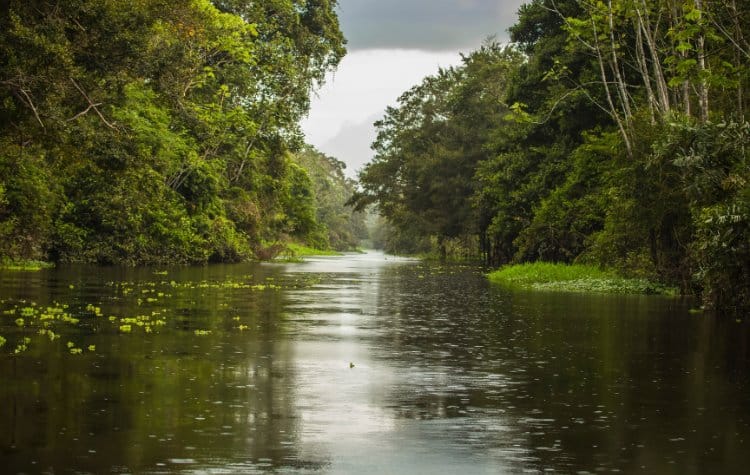
The Tambopata-Bahuaja Biodiversity Reserve offers their own carbon offset program.
Reducing your emissions is the most effective way to make your trip sustainable. Choose non-stop flights and pack light to reduce your emissions from air travel. Use public transportation or walk whenever possible. Flying non-stop is one of the most effective ways to reduce your carbon footprint. Take the time to research airlines and choose one with a good environmental record.
Additionally, consider investing in an economy or business class ticket as those seats have fewer emissions per passenger compared to first-class seats. Packing light is not only better for the environment, but it also makes your trip more enjoyable. You’ll be able to move around more easily and not have to worry about checking in or out of hotels as frequently. Try to pack only what you need and opt for clothing made from sustainable materials.
You can also choose to offset your emissions by purchasing carbon offsets, but it’s important to do your research and choose a reputable organization. A few of our favorites that have clear and transparent policies on how they use the funds from carbon offsets, and consider the types of projects they support, include:
- Conservation International: Conservation International offers a program called CarbonFund that helps offset carbon emissions from air travel. The program supports forest conservation projects in Brazil, Peru, and Colombia.
- The Tambopata-Bahuaja Biodiversity Reserve: The Tambopata-Bahuaja Biodiversity Reserve is located in the Madre de Dios region of Peru and offers a carbon offset program. The program supports forest conservation efforts and sustainable agriculture projects.
- The Patagonia Sur Foundation: The Patagonia Sur Foundation offers a carbon offset program that supports forest conservation and reforestation projects in Chilean Patagonia.
- The Rio de Janeiro Carbon Offset Program: The Rio de Janeiro Carbon Offset Program offers carbon credits for individuals and businesses to offset their emissions from air travel. The program supports reforestation and sustainable development projects in the region.
Choose to stay at eco-friendly hotels
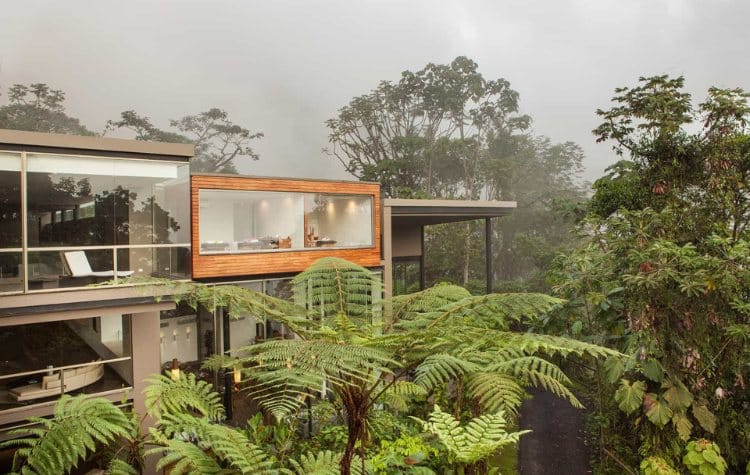
Mashpi Lodge is a luxury eco-lodge located in the Andean Cloud Forest of Ecuador.
Ask your Kuoda guide to specifically find the most eco-friendly option there is for your trip. They will ensure your hotel is compliant with LEED certifications that use renewable energy, recycle, and reduce water consumption. Many luxury hotels in South America offer spa and wellness services that are eco-friendly and sustainably sourced, such as natural ingredients and local medicinal plants. You can also indulge in gourmet cuisine that features local and organic ingredients, supporting sustainable agriculture and reducing your carbon footprint. Additionally, research the local community to ensure that the hotel supports the community and the surrounding environment.
Donate to organizations that do conservation work, before your trip
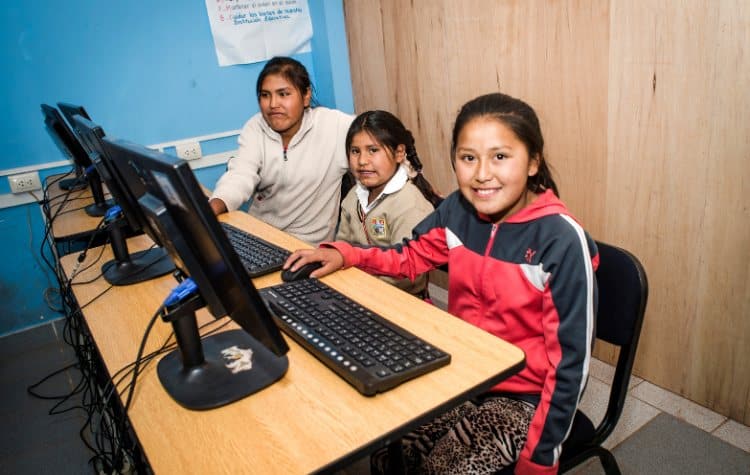
Kaypi Kunan Computer Center program located in the Andean communities of Cusco.
Donating to organizations that work on conservation efforts in South America. By supporting these organizations, you’re helping to protect the environment and local communities. Consider making a donation to a local organization that supports cultural preservation or community development. This could be a local NGO, community center, or school. You could also consider bringing supplies or equipment that are needed in the local community, such as school supplies, medical equipment, or sports equipment.
One such organization is Kuroda’s Peruvian-based non-profit, Kaypi Kunan, oriented on social assistance and focused on education, and support for Andean communities. Our motivation is to leave a positive footprint in the world and invite you to take part in this beautiful project by actively participating in the change that the world needs. Whether it’s providing books and computers, facilitating youth programs, or improving Spanish literacy, through our projects we seek to strengthen and empower Andean children and adults, developing enriching educational activities that promote learning with values.
Engage with local communities
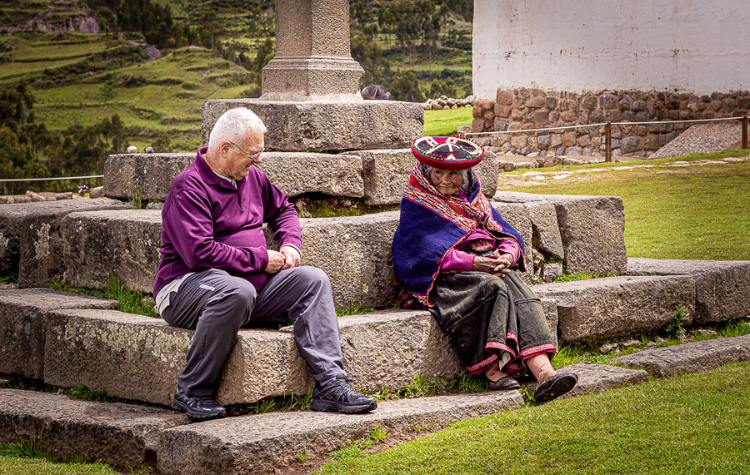
The people from local communities are often welcoming and open to sharing their cultures.
Consider participating in community-based tourism activities, such as homestays, cultural tours, or volunteering opportunities. These types of activities allow you to interact with local communities and learn more about their way of life.
Seek out local businesses
One of the best ways to support local communities is to patronize local businesses. This includes restaurants, markets, and shops that offer locally-made products. By supporting local businesses, you are helping to create economic opportunities for local communities and preserving their traditional livelihoods.
Travel with us
When you travel with Kuoda, you’re supporting businesses that prioritize sustainability and minimize their impact on the environment. Kuoda has a longstanding commitment to sustainability and conservation and adheres to strict environmental standards. In 2022, Kuoda Travel received the Climate Positive Certification, joining Glasgow Declaration for climate-responsible tourism. Since its creation, sustainability has been part of the philosophy of Kuoda, which is convinced that tourism is an essential part of our social and cultural life and can play a relevant role in protecting and restoring nature. This helps encourage sustainable practices and can have a positive impact on the local economy.
Kuoda can always help you build an itinerary that meets every need, including eco-friendly travel practices. Let us know what drives you, and we’ll work alongside you to create a custom vacation that matches your bucket list. Or, visit our Responsible Travel page to find a few quick tips and ideas about the best ways to keep your vacations sustainable. Get started on planning your sustainable luxury trip to South America with us by reaching out to us, today.
Sip Responsibly at The Most Sustainable Vineyards in Argentina
Argentina's wine industry is not only renowned for its exceptional quality but also for its commitment to sust...
Read Post9 Wildlife Conservation Programs For Your Travel To The Amazon Rainforest
Travel to the Amazon Rainforest, often referred to as the "Lungs of the Earth," is a vast and ecologically cri...
Read PostThe Most Sustainable Destinations in South America To Visit in 2024
Sustainable travel to South America is critical in ensuring the destination, its biodiversity and rich culture...
Read Post

 Call
Call 








